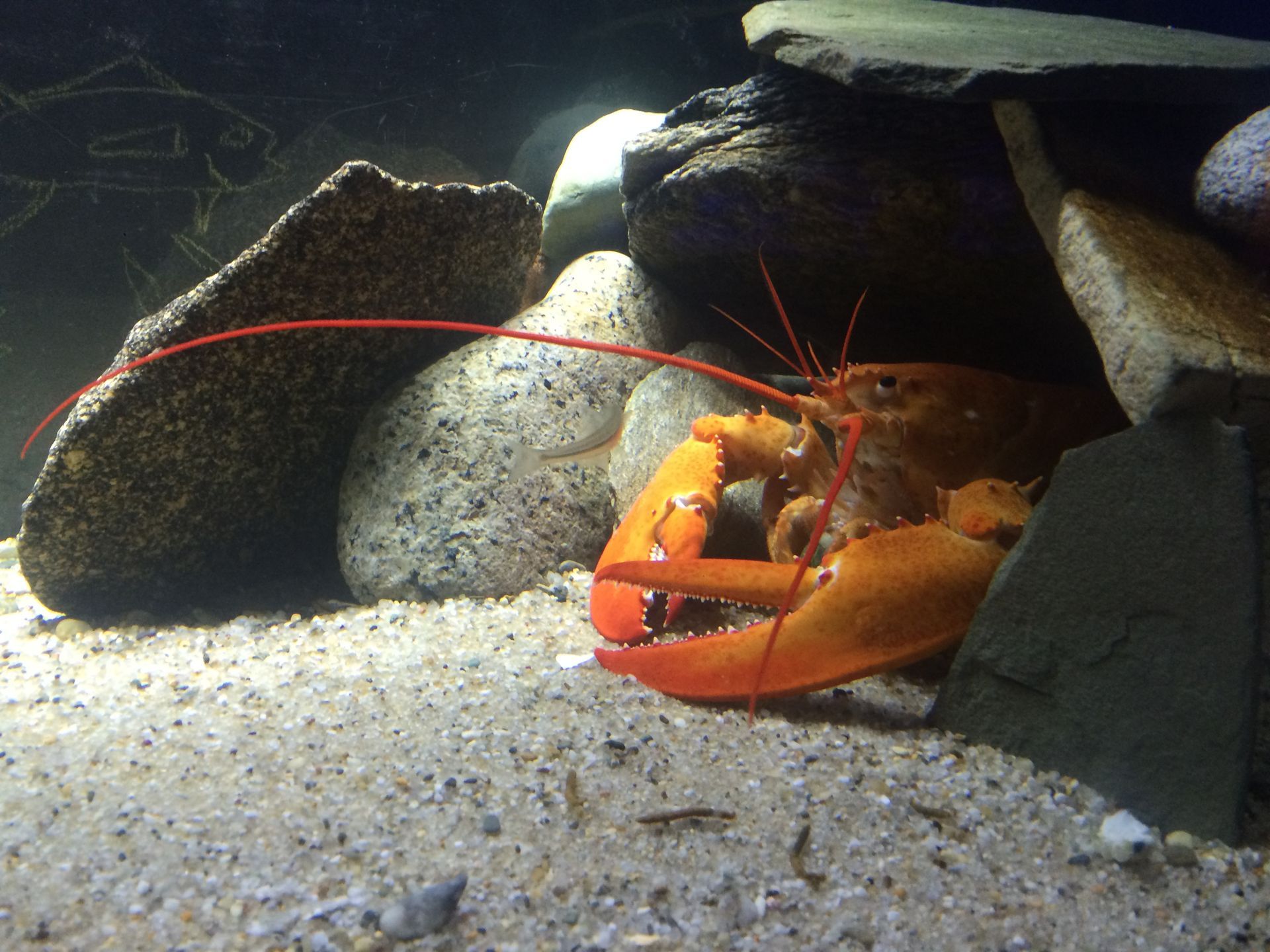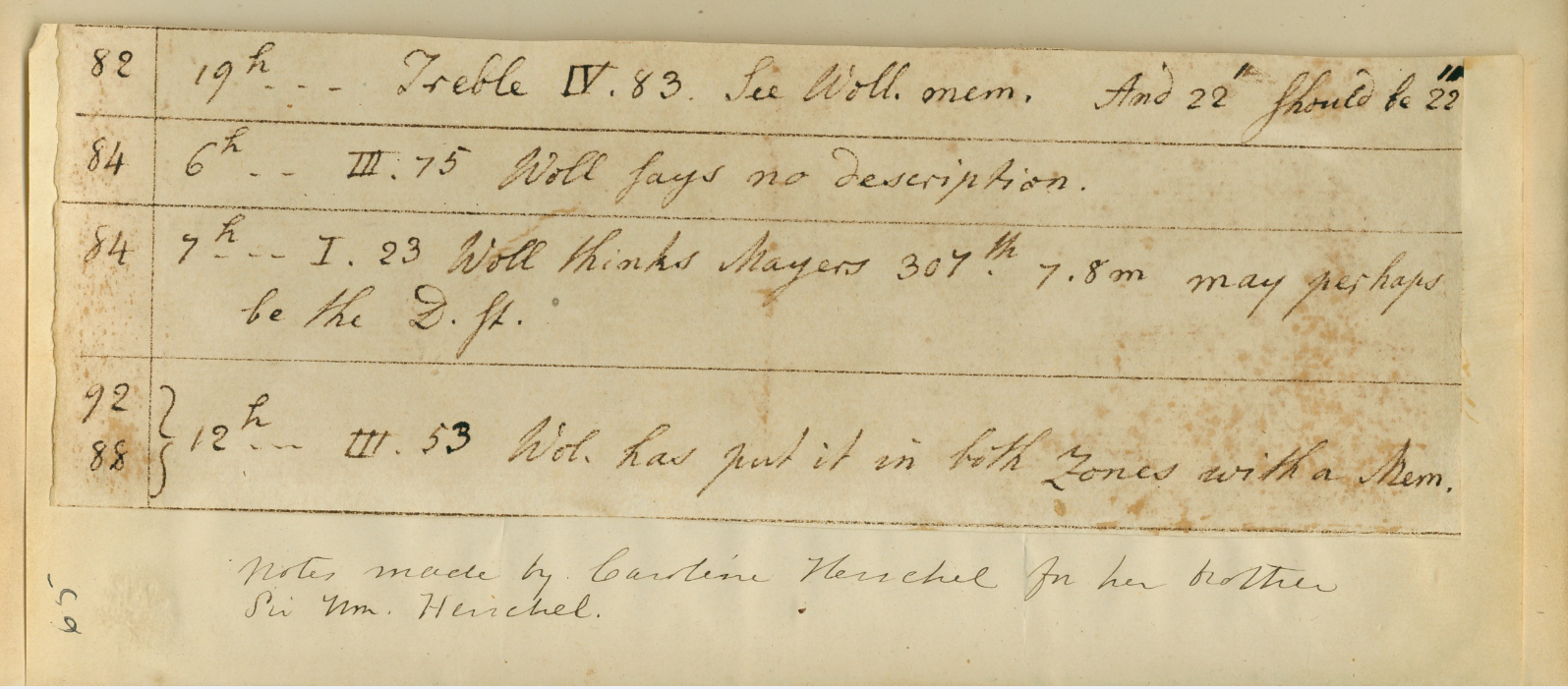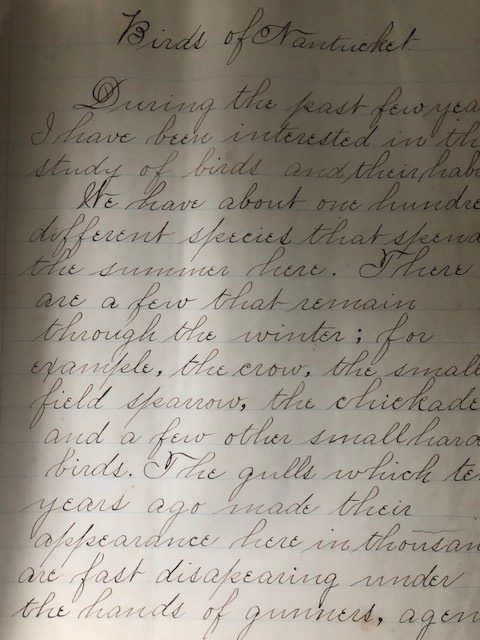Birds, Birds, Birds!
I was very happy to recently receive several emails concerning a wonderful essay written in 1886 by a student graduating from the Coffin School. Two of the author’s grandchildren had happened upon it and shared it with several of their family, friends, and acquaintances.
This essay piqued my interest for several reasons. It was, for one, about birds and obviously my MMA antennae went up. Then, it’s of a historical nature given it was written in April 1886. And then, I am a Coffin School Trustee, wand while the School no longer functions as a school, the Trustees still maintain the building, its archives and collections, and allow other island non-profits and other entities to use the space to varying degrees. It also provide me with another link to the Mitchell family as Maria was given a small observatory that islanders helped to build for her nearby the School and her sister was the language teacher at the Coffin School. Anne Mitchell Macy taught languages at the School for several years and married the school principal, Alfred Macy. And, the library located in one of the spaces is names for their daughter, Frances Mitchell Macy. So, it all comes home to roost for me (haha)!
So I read it with great interest with all those connections being activated and humming. What made it even better is that the two grandchildren asked if the Maria Mitchell Association would like it for its archives because of its topic! I jumped at the chance with great enthusiasm and after a COVID-safe exchange via a car trunk, the MMA is happily in receipt of this little treasure. It serves not just as a historical record of the birds on the island during that time but also of the history of the island and education.
With a very big thank you to the donors!
JNLF
I was very happy to recently receive several emails concerning a wonderful essay written in 1886 by a student graduating from the Coffin School. Two of the author’s grandchildren had happened upon it and shared it with several of their family, friends, and acquaintances.
This essay piqued my interest for several reasons. It was, for one, about birds and obviously my MMA antennae went up. Then, it’s of a historical nature given it was written in April 1886. And then, I am a Coffin School Trustee, wand while the School no longer functions as a school, the Trustees still maintain the building, its archives and collections, and allow other island non-profits and other entities to use the space to varying degrees. It also provide me with another link to the Mitchell family as Maria was given a small observatory that islanders helped to build for her nearby the School and her sister was the language teacher at the Coffin School. Anne Mitchell Macy taught languages at the School for several years and married the school principal, Alfred Macy. And, the library located in one of the spaces is names for their daughter, Frances Mitchell Macy. So, it all comes home to roost for me (haha)!
So I read it with great interest with all those connections being activated and humming. What made it even better is that the two grandchildren asked if the Maria Mitchell Association would like it for its archives because of its topic! I jumped at the chance with great enthusiasm and after a COVID-safe exchange via a car trunk, the MMA is happily in receipt of this little treasure. It serves not just as a historical record of the birds on the island during that time but also of the history of the island and education.
With a very big thank you to the donors!
JNLF
Recent Posts






